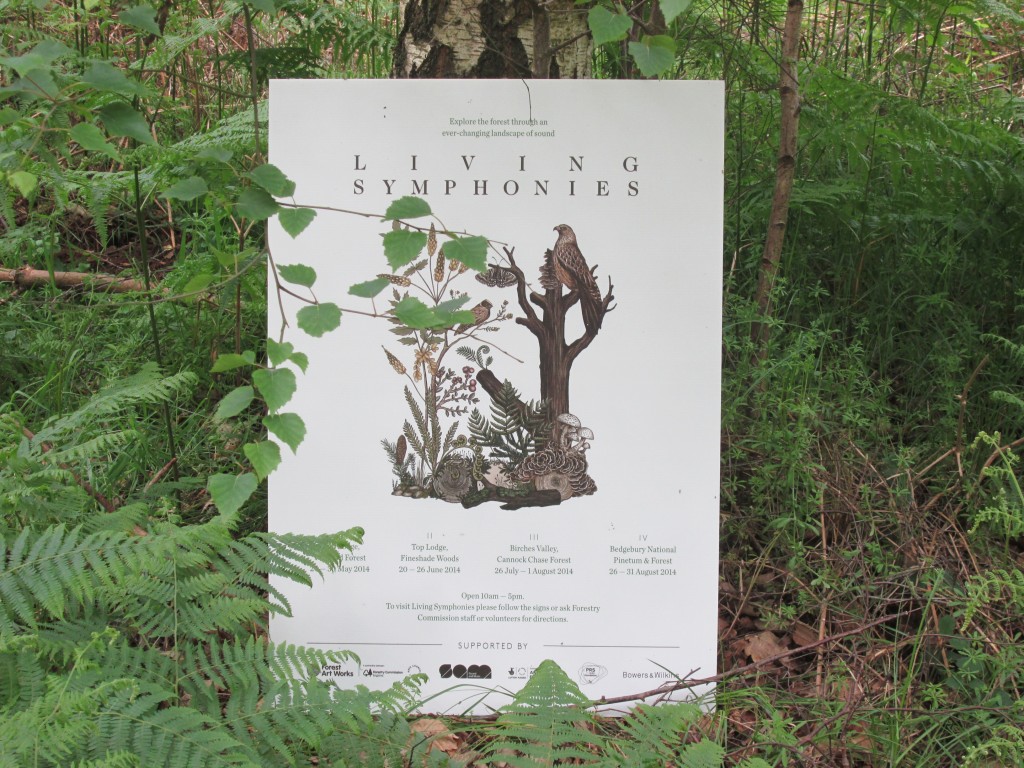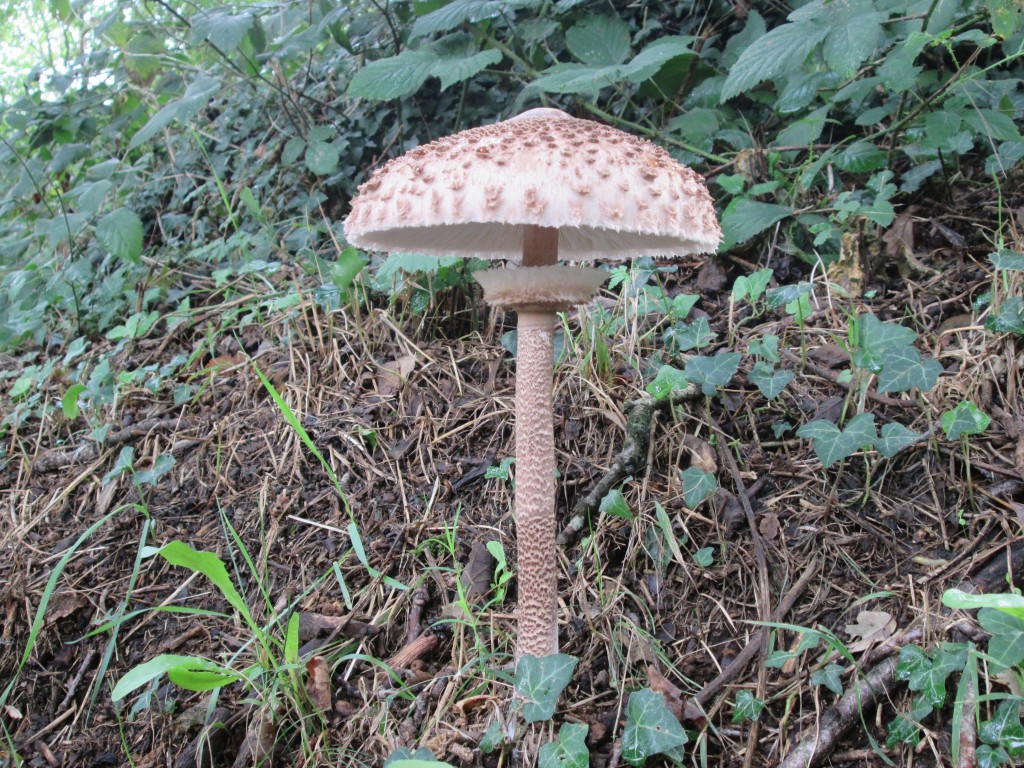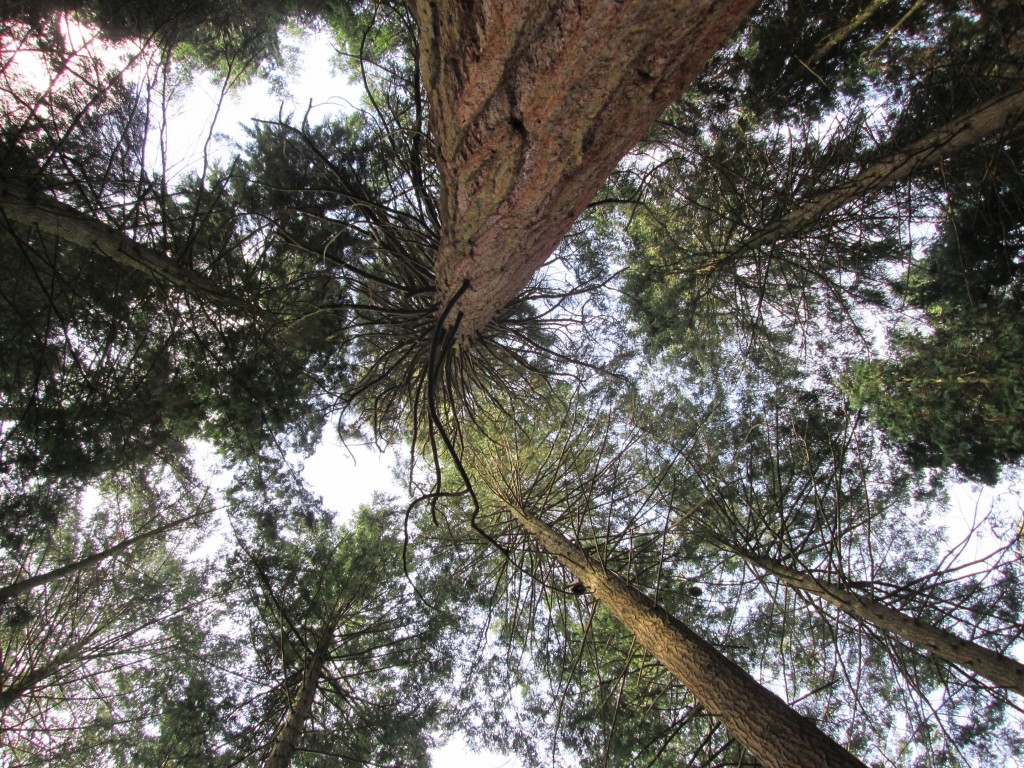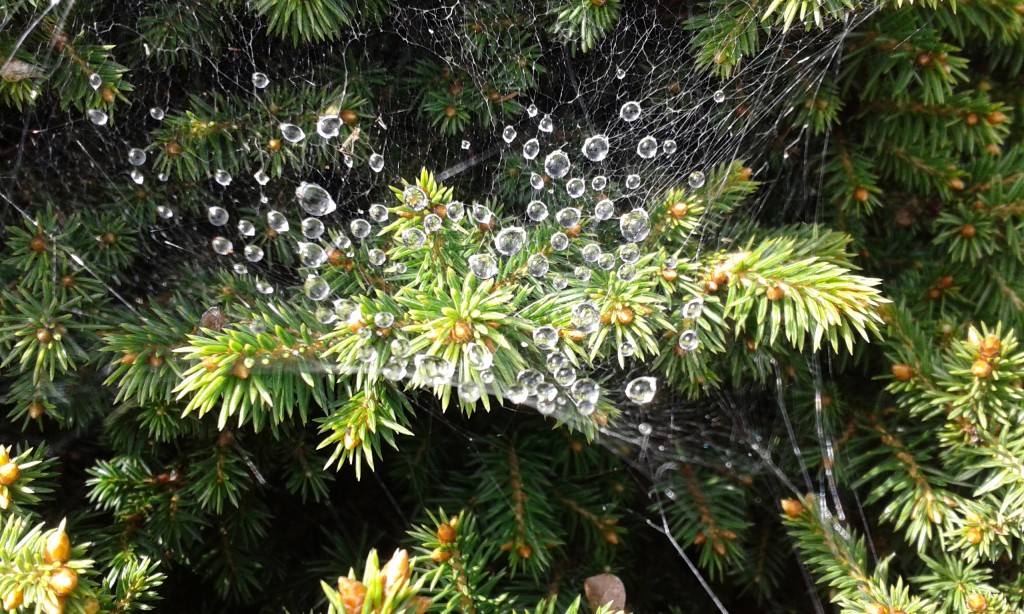A personal reflection from Christopher Brown, an Art Therapist and Lecturer who visited Living Symphonies at all four sites during the summer 2014 tour of the work.
I came to Living Symphonies with minimal knowledge of the artists but some sense of an aesthetic from their website. I approached the Thetford Forest site with nervous excitement. As I followed the signs deeper into the forest faint sounds emerged and then, almost suddenly, I was upon it and invited in. It took me a while to settle, I was curious about where the sounds were coming from and what triggered the changing sequences. Some sounds were alien to me, some familiar, like fragments of contemporary classical music. As I slowed down and allowed my mind to listen and my eyes to see, the forest glade became a wondrous place. A feeling of awe developed, of being in tune with something other that was also felt to be part of me.
When I spoke to James he explained the conceptual underpinning, which made me aware of the magnitude of the piece’s ecological structure and simply blew my mind. I left feeling I had experienced something really rather special and couldn’t wait to tell friends what it was about. As I digested the experience, and read more on the website, I realized that I had only dipped my toe in the water of the piece.
On the eve of summer solstice I approached Fineshade Woods for a special twilight performance. I came with a friend and we joined a group of twenty or so people gathered for the event. I felt more relaxed this time and lying down quickly became immersed in a different experience. I felt I could hear the wood speaking to me through the musical elements. The low light and nocturnal sounds brought an edge of ancient fear and being in a group brought some fellowship of the shared experience. I seemed to move between hearing the wood and it’s ecosystem, and hearing a piece of contemporary music. On reflection, perhaps these two poles created some confusion in me as I felt there was something I could not reconcile about the experience. Nevertheless, I was developing a greater awareness of the piece but still didn’t know what it was, although I had some sense of being caught in an ‘aesthetic moment’ (Bollas, 1987[1. Bollas, C. (1987) ‘The shadow of the object. Psychoanalysis of the unthought known.’ London, Free Association Books.]).
Bollas suggests such moments ‘are registered through an experience in being, rather than mind, because they express that part of us where the experience of rapport with the other was the essence of life before words existed’ (p 32).
By now I had the bit between my teeth and determined to go to all four sites. And so to Cannock Chase and a campsite in the heart of the forest some distance from the installation site. Having explored the area on foot and slept there I was already ‘in the zone’ by the time I walked into the site on a fine early morning in July. A different ecosystem this time and as a result the piece sounded different, for example I noticed there were less gongs and more strings. I quickly entered a meditative state of mind, eventually broken by the thought that I was listening to the forest coming alive in another dimension. It was as if I had been listening to the things themselves. I also became aware of an absence of any particular feeling within myself. Something felt different about the experience.
I met Daniel, who was interested in this difference. I thought it had something to do with the way my initial sense of awe seemed to diminish on repeated experiences of the piece. We discussed the nature of the composition and the tension between the imaginative and the concrete aspects. Daniel remembered experiences of the uncanny and the sublime arising from his listening experience of two precursor pieces and this was contrasted to the long and hard process of producing the piece then hearing it daily for a week at a time. Later, in a moment of reflection on the walk back to camp, I thought about the inevitable tendency to project something onto musical experience and in particular the role of ‘unconscious phantasy’ (Isaacs, 1948[2. Isaacs, S. (1948) ‘The nature and function of phantasy’. International Journal of Psycho-Analysis, 29: 73-97.]). It is unconscious phantasy that unknowingly gives richness to the meaning of experience through symbolization. The musical composition occupies a ‘transitional space’ (Winnicott, 1971[3. Winnicott, D.W. (1971) ‘Playing and Reality’ London, Tavistock Publications.]) but is heard in the context of the physical forest and through the computer simulation of the ecosystem. In this way our attribution of meaning is tempered by the real. When listening do we inhabit an illusory, transitional space or do we become part of the forest? Such binary thinking is unresolvable other than by perpetuating the split. Perhaps what the piece requires of us is a more embodied response, encompassing the imaginary and the sensory, holding both.
With these thoughts in mind I arrived at Bedgebury Pinetum with another friend in tow. The site was located within a fantastic collection of pines from around the world and consisted of a small stand of trees with another more open area with shrubby planting. I went straight to the Giant Sequoia and lay down with my eyes closed. I was immediately struck by what seemed, to my ears, to be more rhythmic sequences and more low frequency percussion, which reminded me of ambient music. I suddenly felt overwhelmed with emotion but quite unaware of what had triggered this. It happened again a while later and it was only much later on returning home that I thought it might be linked to an experience of beauty, not just an aesthetic experience but an embodied one as well. Clearly, my approach to listening lying down with eyes closed is one that leads to a more inward experience, at one point I felt that I was the tree – literally inside it!
My friend took a different approach and sat on a log listening and observing the small group of people who gathered over the time he was there. He told me that he had a sense of a shared experience and being part of a group. This made me think about what kind of social activity does this piece seek to address? It opens up a sonic space, an immersive experience, which is environmental in its subject and its site-specific nature. However, the nature of electronic recording played through a 24 channel sound system produces sounds that, while located in the physical space of the forest site, are also heard in a virtual space that is imaginary. In my mind I linked the sounds to Minimalism and the generative ambient music of Brian Eno, but this piece is no mere soundscape as it has elements of classical symphonic structure. So what is it, what is this music for? It asks the listener to think. To think about the unseen aspects of what surrounds us and the inter-relatedness of things. It offers a space for meditation on the nature of the forest and uses imagination to create a space in your mind that connects to something primal.
It is art. It raises consciousness about the way the natural order of things has intrinsic value that transcends human values. Arne Naess (Wikipedia, 2014[4. http://en.wikipedia.org/wiki/Arne_Næss (accessed 17/9/2014)]), who coined the term ‘Deep Ecology’, suggests that we humans can only attain realization of the self as part of an entire ecosphere. Living Symphonies makes this idea visible through sound.
Biography
Christopher Brown is an Art Therapist, Lecturer on the MA Art Psychotherapy at Goldsmiths, University of London and Editorial Board member of the open access electronic journal ATOL: Art Therapy OnLine




